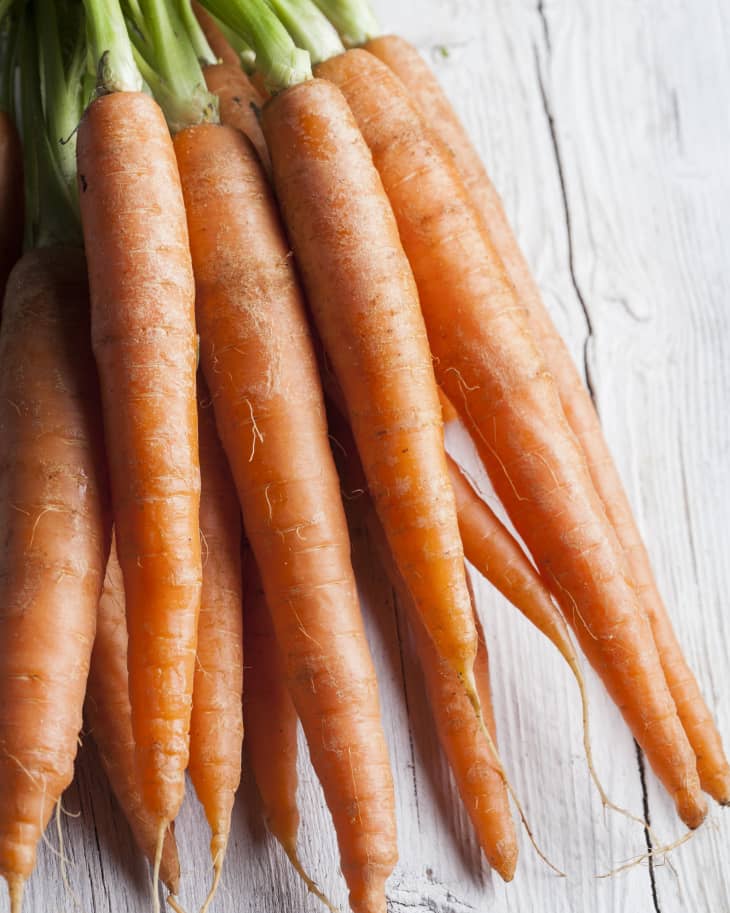Why You Shouldn’t Peel (Most of) Your Vegetables
When you’re late getting home from work and you’re already starving for dinner, peeling your vegetables before cooking them probably feels like the last thing you want to be doing. It tacks on a few extra minutes, which on crazed weeknights can feel all too precious. So is it really necessary?
Nope! If you wash your vegetables well, organic or not, it’s OK to leave the peel on. Actually, it’s often encouraged, as they’re packed with good stuff that you’re otherwise tossing in the trash.
There’s Extra Fiber in Those Peels
While the flesh is full of fiber, you can take full advantage of any vegetables’ full fiber content by leaving the peel on. For instance, while all vegetables contain soluble and insoluble fiber — both of which are crucial components of a healthy diet — most of the insoluble fiber (the fiber that helps keep you regular) is found in their peel.
They Can Contribute Flavor and Texture
Sliced cucumbers would be boring and flavorless without the crunchy, green-tasting peel. And it’s hard to argue with the fact that the best part about roasted potatoes is the contrast between the crispy peel and the soft, fluffy flesh.
Other peels don’t contribute much of anything, which is another reason it’s completely fine to leave it on. Carrots taste the same peeled and unpeeled since the skin is so thin to begin with.
When You Actually Should Peel
Unfortunately, even though you can liberate yourself from peeling most vegetables, there are still a handful that do really need to be peeled. Winter squash, like kabocha and red kuri; celery root; and kohlrabi are examples of vegetables that come with thick, tough skins that are best removed.
Also, depending on the preparation, you might be better off peeling. If you want the creamiest mashed potatoes, remove it before mashing, and if you’re serving your carrots or turnips simply steamed, it’s a good idea to peel them, as steaming can toughen the skin.
Finally, peel if the vegetables are extra dirty (sometimes beets just can’t get clean no matter how much you scrub) or if there’s a thin coat of wax on the outside, which is sometimes applied to root vegetables like rutabaga and turnips to help preserve them. If you’re not buying organic and are concerned with pesticide residue, save yourself some sanity and peel those, too.
